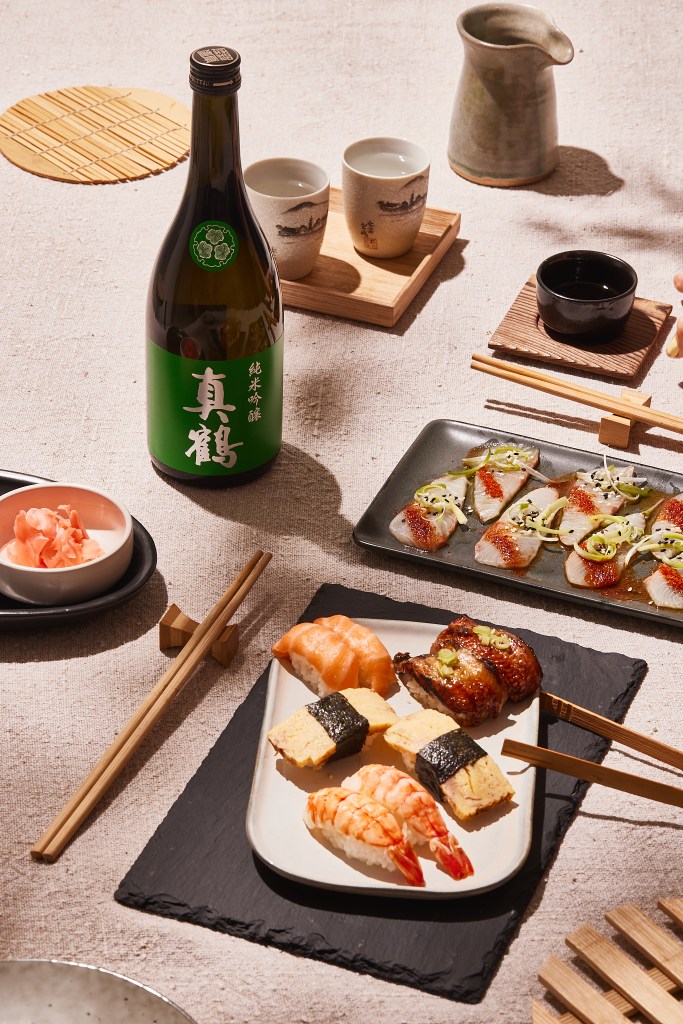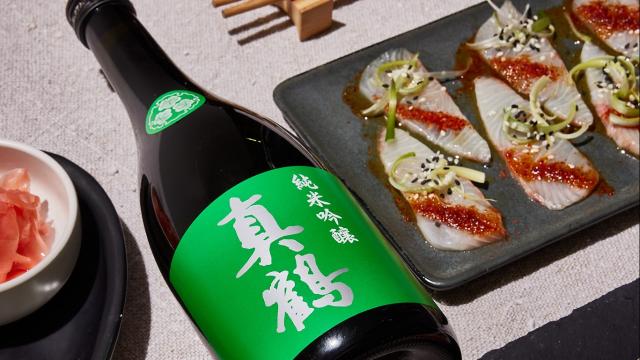Unlike wine or beer, or even house spirits, sake is a beverage that doesn’t always sit in every home bar. And although there are loads of people who love to sip on the Japanese drink, you’d be forgiven for feeling a little unsure about the right way to drink it.
While, like all drink varieties, you are certainly free to enjoy sake however you like, there are some useful tips you can apply to your next sake session that may help you get a little bit more out of the experience. For that reason, we got a handful of tips from Endeavour Group Asian Beverages Sourcing Manager Samuel Lam. He shared suggestions for drinking sake over email. We’ve popped them for you below.
Tips for drinking sake like a pro, according to a pro

First things first. If you’re unfamiliar with sake, it is a fermented alcoholic drink made by fermenting rice. Lam explained that it’s a unique drink because although many refer to it as a rice wine, it’s closer to beer in production.
“Sake comes in an incredibly diverse range of styles and flavours, from dry to sweet, fragrant to complex. It can be influenced by terroir and region and is consumed both cold and warm, so try a variety to find your personal favourite,” he said.
As you work your way through this variety of sakes, however, here are some tips to consider.
You can drink sake hot or cold
Similar to wine, sake can be enjoyed both cold or warm, depending on your preference.
“Sake is a versatile drink; you can enjoy it chilled in summer, warm in winter or at room temperature,” Lam shared.
“A way to decide for yourself is to chill a sake and taste it as it warms up! Sake that’s been heated has been enjoyed in Japan for centuries, and warming up the sake allows some of the aromas to come out.”
If you’re interested in tasting warm sake, however, Lam shared that you can place a bottle in a hot water bath or simply pop a glass into a microwave.
Serve in a cup or wine glass
While there are traditions around the glassware used to drink sake, there are other options that will work!
“Sake is traditionally enjoyed in small porcelain cups called ochoko, but wine glasses are acceptable,” Lam shared.
“Experiment and find the best of the two – you may find the aroma may be more obvious in an ochoko compared to a wine glass!”
Savour sake like you would a wine
“Sipping and savouring is the best way to enjoy sake. Think about how you would appreciate wine,” Lam said.
When it comes to enjoying sake, he suggests using the swirl, smell, sip approach. Like when you enjoy a glass of wine, it’s worth taking your time to observe the flavours and texture of sake.
“First, you swirl the glass or ochoko to release the aromas. Then bring the sake up to your nose to smell to pick up any aromas – some sakes have aroma that jumps right out, some are subtle. Take a sip, and feel the sake in your mouth; pay attention to the balance of the aroma and flavour and the texture. Sip and pay attention to how it finishes – does it disappear or linger?”
How do I store sake?
Again, look to wine as a guide for storing sake. Lam said it’s best to keep bottles “stored out of sunlight, upright and in a cool area of the house”.
If you have opened a bottle of sake, store it in the fridge and try to enjoy it within two weeks.
How to pair it with food
If you’re new to sake, chances are you’re curious about how to pair it with food. Fair! We do the same with almost every other alcoholic drink there is.
Lam shared that sake is actually brilliant with food.
“Compared to other beverages, It has a lower acidity or bitterness that does not clash with food so it goes with almost anything,” he said.
“The advice is to experiment! Heating the sake can also change the experience; sakes that are warmed seem more intense, full bodied and higher in acidity and pair well with intensely flavoured and heavy textured dishes such as hot pot or grilled foods.”
How to choose a sake
Here, Lam advised paying attention to the rice polishing grade of sakes “as it determines its classification”.
“You may see the term seimaibuai which is Japanese for the ‘rice polishing ratio’ and a percentage, that percentage refers to how much of the rice grain remains after polishing. The more the outer layers of a grain of rice (the husk and endosperm) are polished away, the more premium the sake is.”
If you want specific recommendations, however, Lam said:
- Junmai-shu is a solid entry-level option: Prices start from $20 per bottle at Dan Murphy’s.
- Junmai Ginjo-shu is the next level up: at Dan Murphy’s
- Junmai Daiginjo-shu is higher quality again: Prices will be steeper here. at Dan Murphy’s

Leave a Reply
You must be logged in to post a comment.